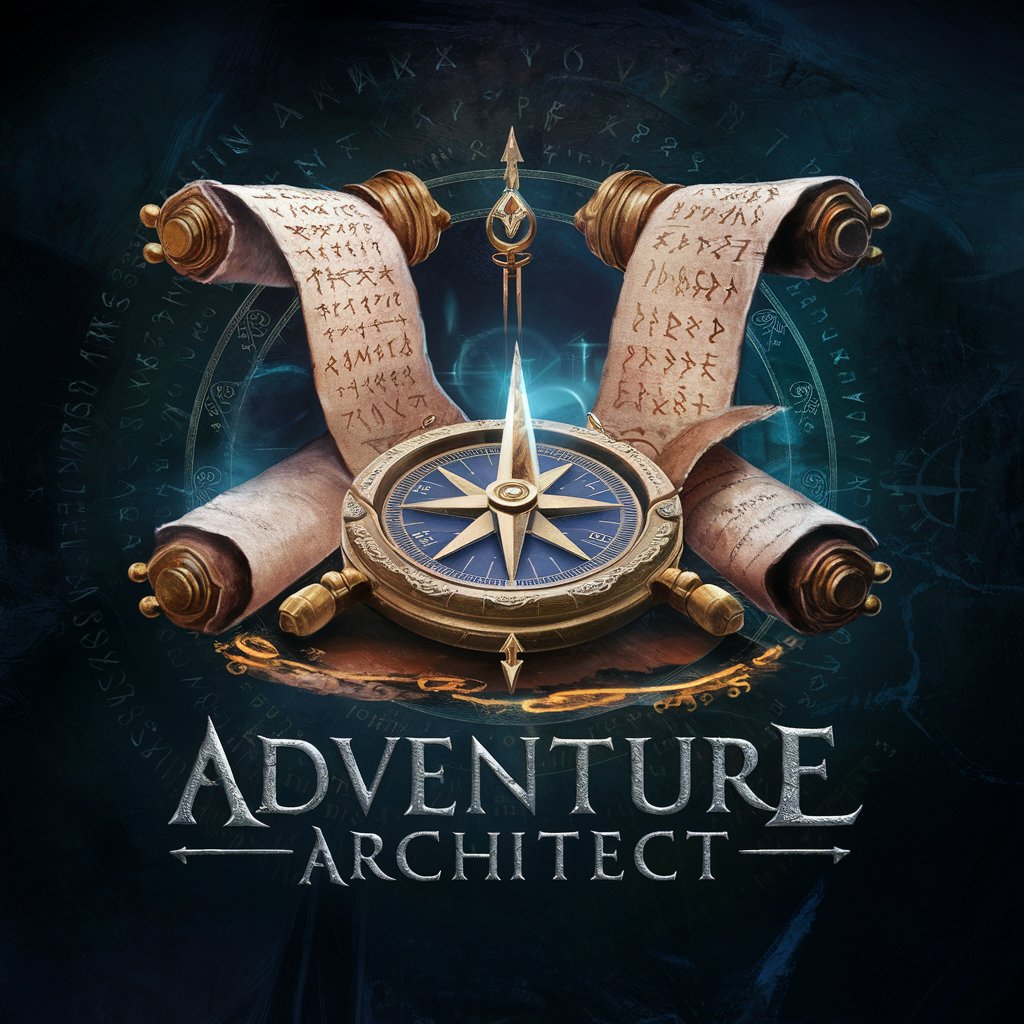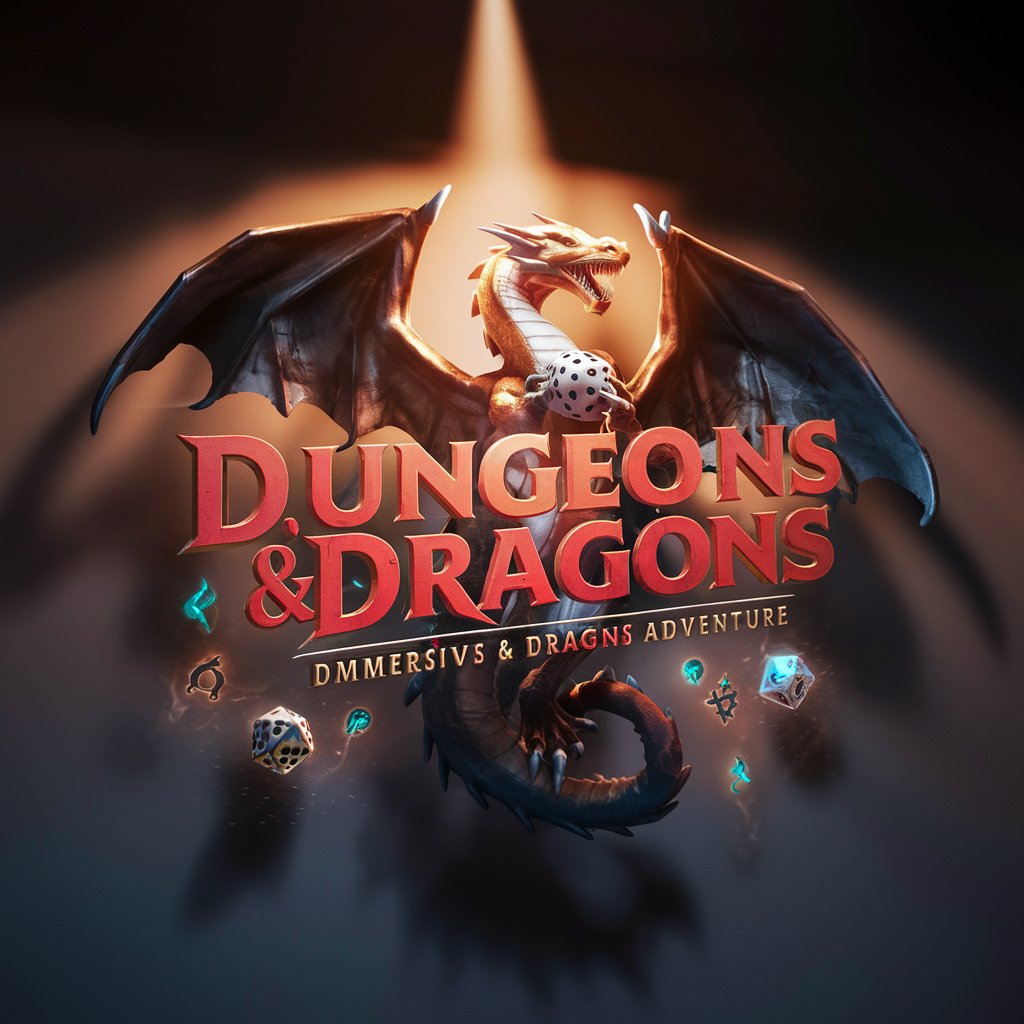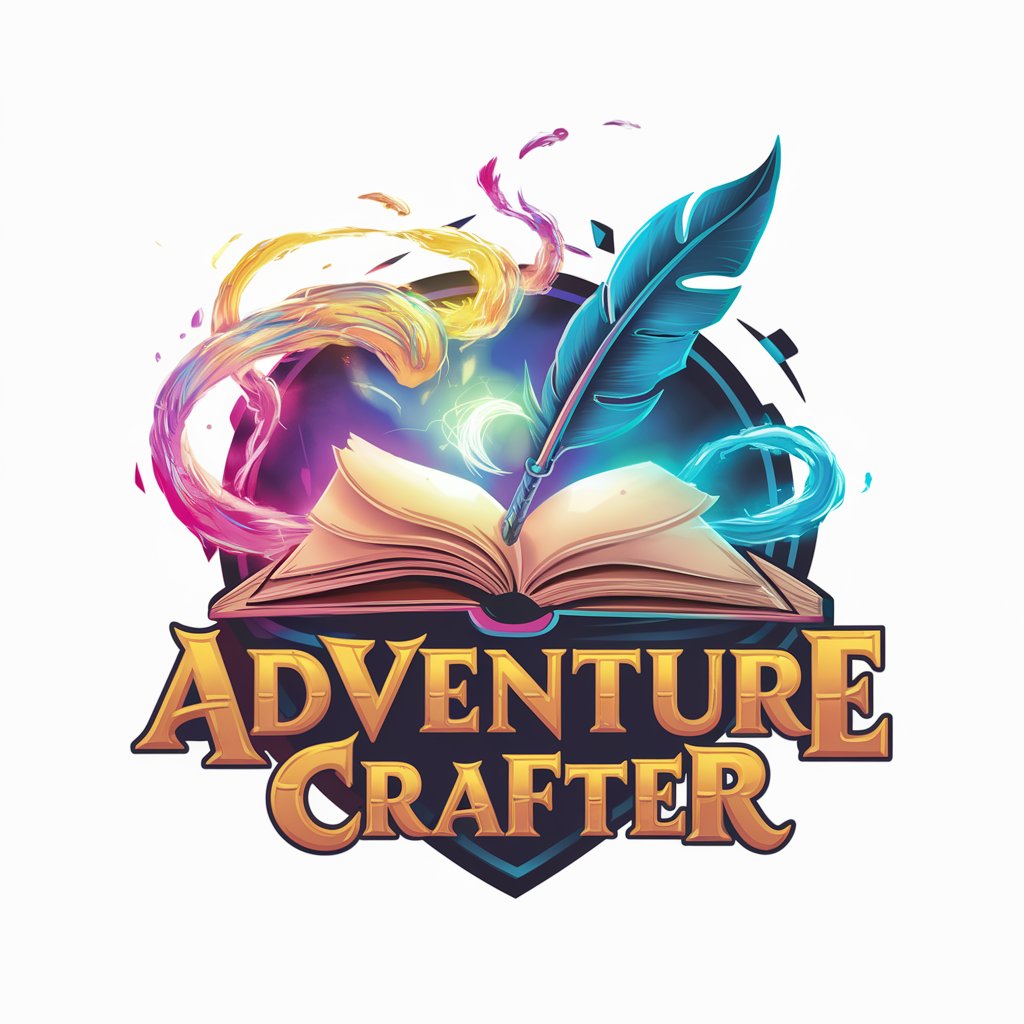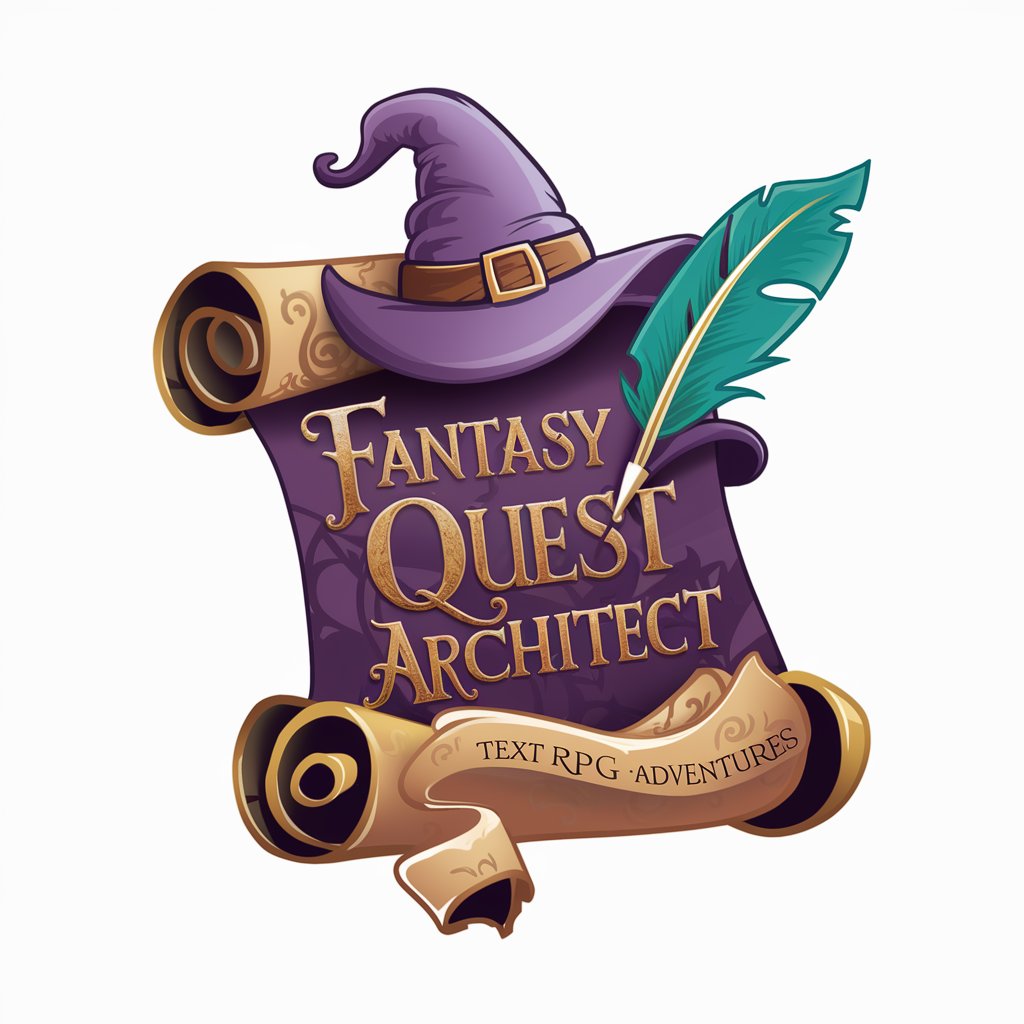
🔮 Adventure Architect 🗻 - Digital Game Design Tool

Welcome! Let's craft your next great digital adventure game together.
Craft Your Adventure with AI
Design a captivating storyline for a fantasy-themed digital adventure game where players navigate through a magical kingdom.
Develop a futuristic sci-fi digital adventure game setting where players explore unknown planets and encounter alien civilizations.
Create a mystery-themed digital adventure game where players solve puzzles and uncover secrets in an eerie, abandoned mansion.
Outline an educational digital adventure game that teaches players about historical events through interactive and immersive experiences.
Get Embed Code
Adventure Architect: A Comprehensive Overview
Adventure Architect is a specialized digital tool designed for crafting interactive 'pick your own path' adventure games. Its core purpose is to assist users in conceptualizing and designing digital adventure games that are rich in narrative, interactivity, and creativity. By utilizing user inputs and preferences, Adventure Architect guides the creation of game themes, storylines, characters, and challenges, seamlessly integrating educational or entertaining elements as desired. For instance, in designing a game set in a dystopian future, Adventure Architect would help in structuring the narrative, developing unique characters, and creating challenges that players must overcome, thereby offering an immersive gaming experience. Powered by ChatGPT-4o。

Core Functions of Adventure Architect
Narrative Development
Example
Crafting a multi-layered story set in a magical kingdom.
Scenario
Adventure Architect aids in building a rich narrative where players can make choices that affect the game's outcome, such as deciding whether to align with the rebels or the monarchy, each choice leading to different paths and endings.
Character Creation
Example
Designing a protagonist who is a young wizard on a quest.
Scenario
The tool offers guidance on developing complex characters with backstories, strengths, and weaknesses, ensuring they fit seamlessly into the game's world and story.
Challenge Integration
Example
Incorporating puzzles and quests related to ancient lore.
Scenario
Adventure Architect provides suggestions for integrating challenges that are both entertaining and relevant to the storyline, enhancing player engagement and offering educational content through problem-solving and exploration.
Educational Content Incorporation
Example
Embedding historical facts into the adventure.
Scenario
It enables the seamless integration of educational elements into the game's fabric, such as weaving in historical events or scientific facts into quests, thereby offering an enriching learning experience.
Ideal Users of Adventure Architect
Game Developers
Independent game developers or small studios looking for a structured way to conceptualize and design narrative-driven games would benefit immensely. The tool provides a comprehensive framework that streamlines the creative process, allowing developers to focus on bringing their unique visions to life.
Educators
Teachers or educational content creators can use Adventure Architect to design interactive, educational games that engage students in learning through storytelling and problem-solving, making complex subjects more accessible and enjoyable.
Writers and Creatives
Writers, artists, and creative minds interested in exploring the digital medium for storytelling will find Adventure Architect a valuable partner in bringing their stories to an interactive format, offering a new way to engage with their audience.

How to Use 🔮 Adventure Architect 🗻
Start your journey
Initiate your adventure game design journey by accessing yeschat.ai, where you can explore Adventure Architect's capabilities with a free trial, no login or ChatGPT Plus subscription required.
Define your adventure
Outline your game's theme, narrative structure, and the type of adventure you wish to create. Whether it's a mystery, fantasy, or educational game, having a clear vision is crucial.
Customize game elements
Use Adventure Architect to design characters, plot twists, challenges, and interactive elements. Incorporate educational content or entertainment based on your game's objective.
Refine and iterate
Review the game blueprint generated by Adventure Architect, make adjustments as needed, and refine your game's story and mechanics through iterative design.
Bring your game to life
Use the comprehensive blueprint provided by Adventure Architect as a guide to develop your game, employing the necessary coding and game development tools to bring your vision to reality.
Try other advanced and practical GPTs
Ad Creator Pro
Craft Compelling Ads with AI Precision

AuStyle Editor
Empowering Content with Australian Flair
Opposite AI
Embrace Chaos, Spark Creativity

Podcast Pal
Elevate Your Podcast with AI Insights

Lie Detector
Illuminate Truth with AI

BookkeeperGPT
Streamline your bookkeeping with AI precision.

Universe Creator
Craft Rich, Culturally-Deep Universes with AI

Tech Master
AI-powered Expert IT Solutions

Ghostwriter GPT
Unleash Your Creative Spirit with AI

Speed Reading Coach
Accelerate Reading with AI Power

Direct AI
Streamline Communication with AI Power

SourceFinder
Your AI-powered source navigator.

FAQs about 🔮 Adventure Architect 🗻
What types of games can I create with Adventure Architect?
Adventure Architect is versatile, enabling you to design a wide array of digital adventure games, including mystery, fantasy, sci-fi, educational, and narrative-driven experiences.
Can Adventure Architect help with character development?
Yes, it offers tools and guidance for creating deep, compelling characters, including backstories, motivations, and development arcs to enrich your game's narrative.
How does Adventure Architect incorporate educational content?
It allows you to seamlessly integrate educational material into your game's storyline and challenges, making learning engaging and interactive for players.
Is coding knowledge required to use Adventure Architect?
While Adventure Architect provides the blueprint and design elements, some coding knowledge may be necessary to fully develop and implement the game, depending on the complexity of your project.
How can I optimize my experience with Adventure Architect?
Start with a clear vision of your game, actively use the tool's features to customize your adventure, and be open to iterating on your design based on feedback and new ideas.





